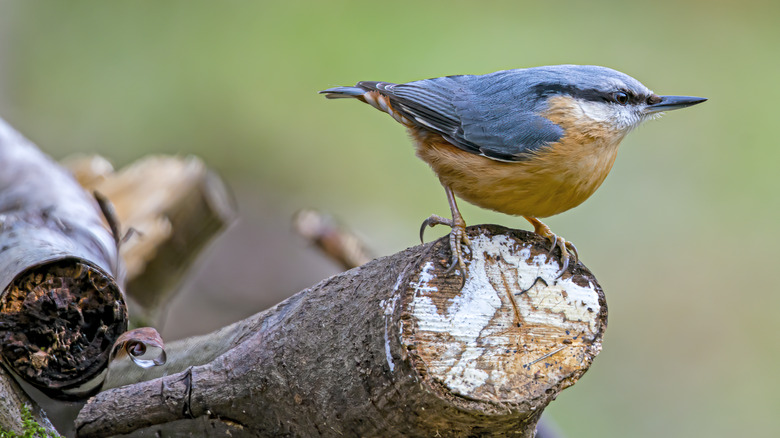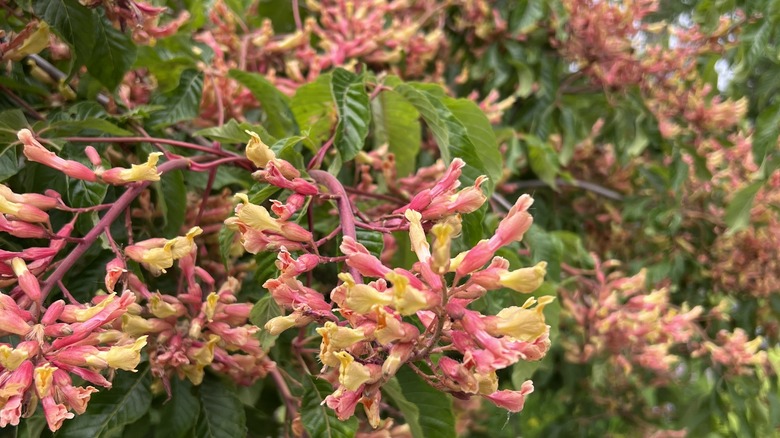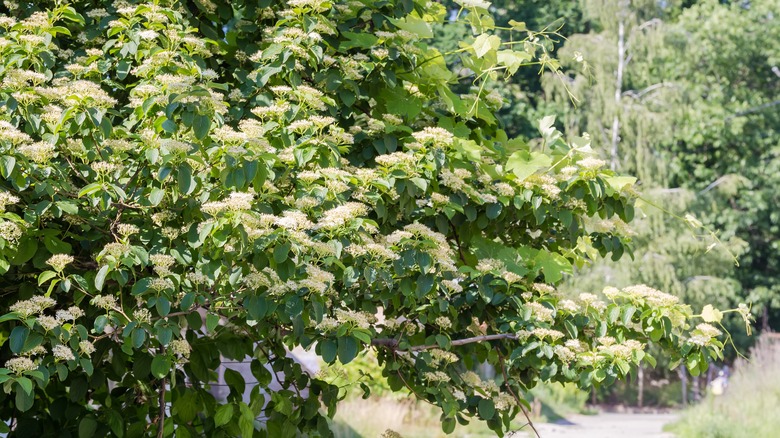Plant These Two Understory Trees To Turn Your Yard Into A Habitat For Birds
Hearing a chorus of birdsong erupt each morning is reason enough to plant a few extra trees in your yard with the hope that they'll find the branches to be a comfortable home or place to chatter. One of the reasons why birds might be avoiding your yard is that you haven't cultivated the right habitat for them. If the area lacks comfortable trees and shrubs where birds can nest, rest, and socialize, they likely won't become recurring visitors.
For your best chances of window birdwatching, there are a few types of trees to have on your radar that are known to attract songbirds and other passerines to your garden. Two understory trees in particular are viable candidates to consider bringing in: dwarf red buckeyes and pagoda dogwoods. Understory trees do best beneath larger trees and can function without much sunlight. They tend to stay smaller, too, making them ideal for smaller gardens or those that already have a variety of taller trees. Here's why birds love these trees — especially dwarf red buckeyes and pagoda dogwoods — and why they work in many backyards.
Dwarf red bottlebrush trees attract pollinators, especially hummingbirds
Also known as a bottlebrush buckeye, this understory tree is perfect for bringing birds to your yard. The bright tubular flowers that blossom from this plant are a visual treat for people and birds alike. This is especially true for hummingbirds, who love the color red and will enjoy sipping nectar from these bright flowers. Although bottlebrush buckeye is beautiful to look at, it's worth noting that every part of the plant except the roots — and especially the seeds — is extremely toxic. Therefore it's not the best choice for homes with roaming pets and kids. But while it's a warning sign for people and pets, the gorgeous pink and yellow flowers are irresistible to pollinators. The tree, which grows native to New York, Pennsylvania, and New Jersey as well as Alabama, Georgia, and South Carolina, will invite butterflies, bees, and birds to your yard.
As far as caring for a bottlebrush tree, this is a relatively relaxed plant that doesn't ask for much. Although it appreciates regular watering, it's drought-tolerant and can handle forgetfulness from gardeners as well as soil that doesn't drain well. Because it's an understory tree, it also doesn't need to be planted in an area with loads of sun exposure. Partial to full shade should suffice. You can expect hummingbirds in the summer when the plant starts to bloom. Thankfully, the tree is more attractive to pollinators than garden-munching animals like deer and rabbits.
Pagoda dogwood trees provide great habitats for birds
With their bushy blooms, tiered branches, and voluminous leaves, pagoda dogwoods provide plenty of safe spots for birds to perch and nest. While the branches and leaves might attract them at first, they'll stay for the fruit that develops in the warmer months. Birds and small mammals, like chipmunks and rabbits, are fans of the nectar and the dark blue berries that appear after the flowers blossom in spring and summer. A tree that provides food and a home is an easy win for avid birdwatchers. Aside from birds, pagoda dogwoods are attractive to other pollinators, too. Bees and butterflies will be found hovering around this dogwood, and the flowers it produces will be equally enjoyed by humans.
Caring for dogwood trees isn't too difficult either. Filtered sunlight and partial shade are all they need for light to survive. Their roots are shallow but vast, so they appreciate regular watering and a topsoil area that stays cool. Your pagoda dogwood are more discerning than bottlebrush buckeye and should also be planted in acidic soil that drains well. With the addition of a dogwood and a dwarf red bottlebrush in your garden, you can expect that more avian species will start stopping by and taking up residence.


